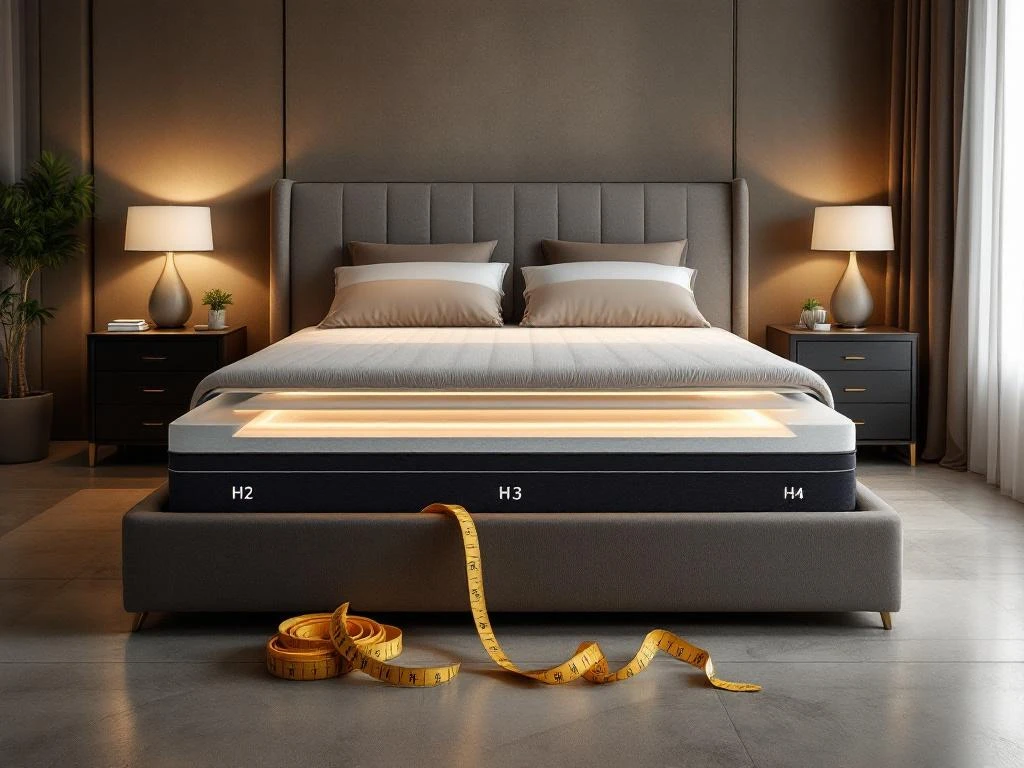Your shopping cart is empty.
Browse our collection or make an appointment.

On average, a box spring can support 120 to 180 kilograms without collapsing, depending on the quality of construction and materials used. High-quality box springs with pocket springs and sturdy frames can often handle more weight, while cheaper versions lose their shape faster. The carrying capacity depends on factors such as the type of springs, the quality of the frame and how the box spring is constructed.
The load-bearing capacity of a box spring is determined by several technical factors that add up to the strength and durability of your bed. The most important component is the spring system in the box spring itself.
Pocket springs offer the best support because each spring is individually contained in a cotton pouch and can move independently. This ensures that weight is evenly distributed over the entire surface. In high-quality box springs, you will often find a double spring layer, which significantly increases the load-bearing capacity.
The frame also plays an important role. Solid wood frames or sturdy metal structures can support more weight than frames made of particleboard or thin metal sections. The connections between the various parts must be sturdy to absorb the forces properly.
The quality of the finish also makes a difference. Techniques such as side stitching ensure that the edges of the box spring stay firm and do not sag. Tufting holds all layers in place without using glue, which improves ventilation and durability.
There are obvious signs that your box spring is getting overloaded. The most obvious sign is sagging, especially in the middle or in the areas where you lie most often.
Watch for creaking or squeaking sounds when you move in bed. This indicates that the springs or frame are under too much tension. You may also feel yourself rolling more and more toward the center of the bed as the edges lose their support.
Check regularly to make sure the box spring is still straight. If you see that it is crooked or that holes are appearing in the fabric, this is a sign that the internal structure is being damaged. Reduced sleep comfort can also indicate overuse; for example, you wake up stiff or feel pressure points.
Another indicator is when your partner is more bothered by your movements than before. This means that the pocket springs are losing their independent action due to overuse.
The difference in carrying capacity between cheap and expensive box springs is significant. Cheap box springs can often carry a maximum of 100-120 kilograms, while quality box springs can easily handle 150-200 kilograms.
In cheap box springs, you often find simple bonnel springs or thin pocket springs in a single layer. The frame is usually made of particleboard or thin metal. These box springs often lack important reinforcements such as side stitching and tufting, so they lose their shape faster.
Expensive box springs have thick pocket springs, often in multiple layers, with zones of varying firmness. The frame is solid wood or heavy metal. The finish is much more careful, with hand-tufting and side stitching that ensure everything stays in place for years.
Investing in quality pays off in the long run. A good box spring lasts for decades without losing quality, while a cheap variety shows signs of wear after just a few years. Better support also ensures healthier sleep and less back pain.
Proper maintenance significantly extends the life of your box spring. Most importantly, distribute the weight evenly and do not overload the box spring.
Turn your mattress regularly, about every three months. This prevents permanent indentations in the areas where you lie most often. Changing your sleeping position occasionally also helps spread the wear and tear.
Make sure you have good ventilation around your bed. Moisture is your box spring's enemy because it can corrode the materials and cause mold. Use a mattress protector to protect your box spring from liquids and dirt.
Regularly check the legs and frame for loose connections. Tighten screws in time before damage occurs. Place your box spring on a flat surface to prevent misalignment.
Avoid sitting on the edges or jumping on your bed. This puts undue stress on the construction and can shorten its lifespan. In quality box springs with good side stitching, this is less of a problem, but caution is still important.
The carrying capacity of a box spring depends on the quality of the pocket springs, frame and workmanship. Quality box springs with double spring layers and professional workmanship can support considerably more weight than inexpensive alternatives.
Recognize overuse by sagging, noises and reduced comfort. Intervene early by adjusting your sleeping habits or investing in a stronger box spring.
The difference between cheap and expensive box springs is not only in the price, but mainly in the materials and construction techniques used. Side stitching, tufting and high-quality pocket springs make the difference in durability.
Proper maintenance doubles the life of your box spring. Regular flipping, proper ventilation and careful use are the keys to a long-lasting box spring.
At Bröring, we are happy to help you choose a box spring that perfectly suits your weight, sleeping habits and needs. Our experience with top brands such as Vispring and Magnitude allows us to offer you the best quality for years of comfortable sleep.